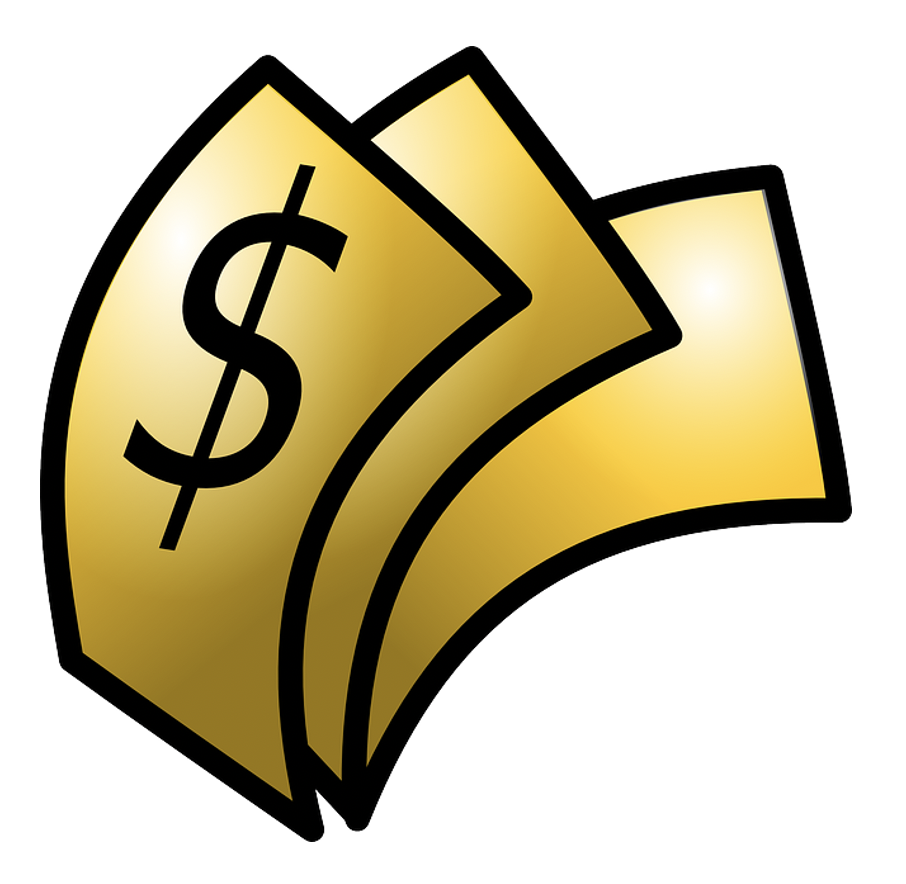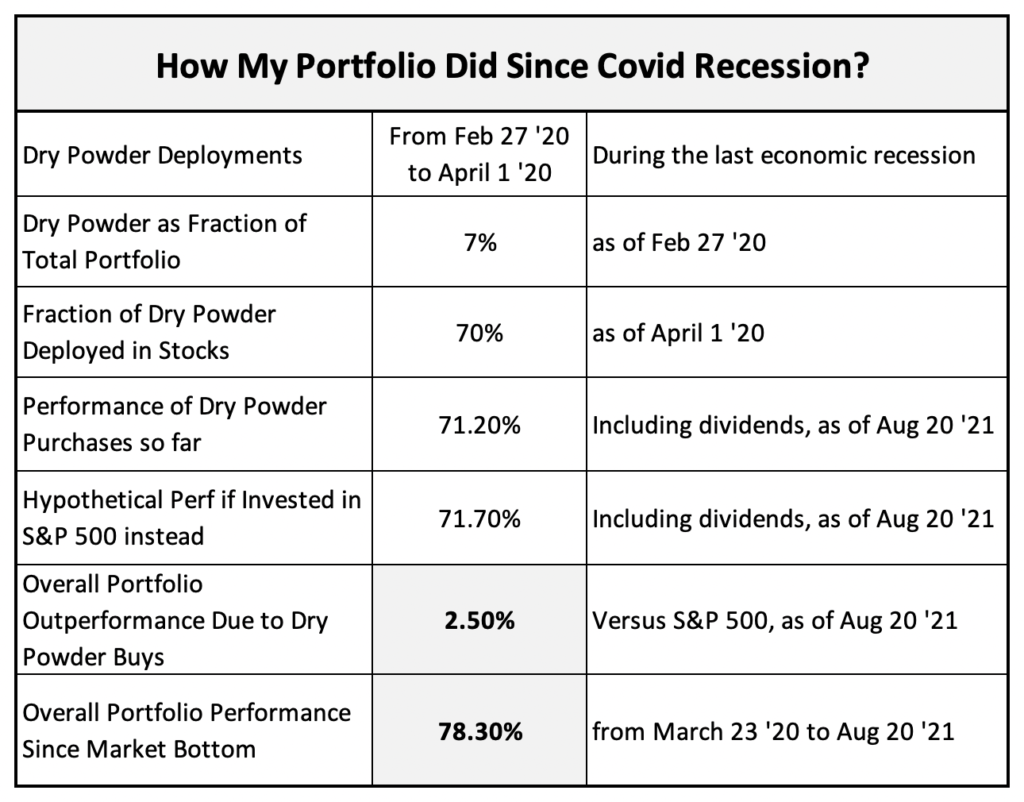
I didn’t! If you have been following the financial media, you must have seen recent headlines like this one: “If you’d bought stocks in March 2020, you would have doubled your money by now”. This one was from Yahoo! Money. There were similar mentions in CNBC, Financial Times, and others. Now, the US stock market has indeed doubled since last year, so the media is not factually wrong. But the impression these news blurbs create is misleading. It is as if investors could have easily doubled their investments, only if they were paying attention last year. I wish it was that simple (and easy)! Two reasons why most investors did not double their money from last year:
(1) One had to know exactly when the stock market would bottom (in this case, March 23, 2020) and had promptly invested all his/her capital on that day.
(2) And he didn’t have any money in stocks at the time and was in 100% cash waiting for the market bottom.
Most investors aren’t like that. Nobody knew at the time when the market would bottom. And most investors (at least those who are open to stock investing) don’t stay away from stocks in search for a market bottom to jump in.
So if you are like me (I consider myself a patient and experienced stock investor), you could not have doubled your money in the last twelve months. No matter how the media portrays it. Please note that I am talking about complete portfolios (cash, bonds, stocks, real-estate, etc.), not a single stock or two.
But if you were a patient and plan-ahead kind of an investor, you probably did well, nevertheless. I did. In this post, I share how my portfolio did over that period.
As I said, my investment portfolio hadn’t doubled since March ’20. A substantial portion of my portfolio was already invested in stocks when the Covid pandemic struck. And I stayed invested since then. As the market recovered and went on to make new highs, my portfolio also did well. As I wrote in a July 2020 blog post, by June 19th last year my portfolio had already reached a new high even though the market hadn’t yet fully recovered. Since then, it had gone further up as the market went up. You can see my full portfolio here.
As regular readers of this blog would know, I use a dry powder strategy in my investing (see this). I keep a portion of my portfolio in cash to take advantage of any market declines. When the Covid recession began last year, I had about 7% of my portfolio in dry powder cash. I was able to gradually deploy a portion of that dry powder cash into stocks. [I posted in detail my transactions from that period in this blog post.] But of course I didn’t know when the market would bottom. I had just kept on investing this new money into stocks as the market went on making new lows.
From February 27th through April 1st, I had invested 70% of this reserve cash into stocks. I didn’t exactly catch the bottom of the market decline—even though I did buy some shares on March 23rd, the day the market touched the bottom of that decline.
As of last Friday (August 20th), those dry powder purchases are up by 71%, counting dividends. This is still a wonderful return in a short time period (less than 18 months). I could not have expected a better outcome back then.
Still, I didn’t double the money for the obvious reason that I didn’t put it all at once on the day the market reached the very bottom (March 23rd 2020).
Did I at least beat the overall stock market by investing in individual stocks? I am afraid not. By my calculations, if I had invested the same dollar amounts on the same dates in a S&P 500 index fund, I would have had about the same return as I have today —roughly 71% including dividends. My stocks didn’t do any better over this period. But that’s ok with me. I like the businesses I bought for the longer term. I think they will beat the S&P 500 over time.
If I look at my entire portfolio and not just at the investments I made during the last year’s recession, the effect on my returns is much more subdued. My portfolio’s outperformance since March 2020—that can be credited to the dry powder purchases—is about 2.5% to date. Remember, I only had 7% cash to begin with, of which I was able to invest 70% before stocks stopped declining.
A bigger factor in my portfolio’s outperformance since March ’20 is how the technology and stay-at-home businesses have outperformed since then. But that’s a different topic to explore. I wrote about it earlier this year — see How my stocks did in 2020?

Other investors who had more cash available in 1Q 2020—that they were able to dip into—likely did better than me. So long as they managed to steady their nerves and kept at it. Remember, February through May last year was a period of great uncertainty. Only the patient long-term oriented minds would have stayed invested despite all the negative headlines and macro concerns. If you were one of them, kudos to you. You’ve done well!
I did fine too. Just not at the level that the financial media would have us believe.
Leave a Reply